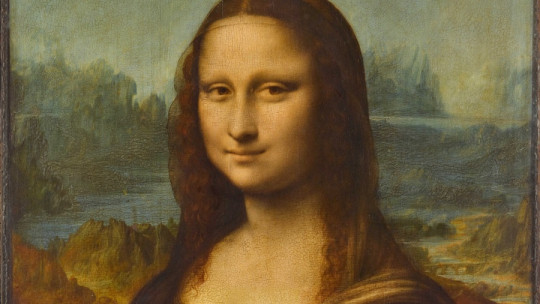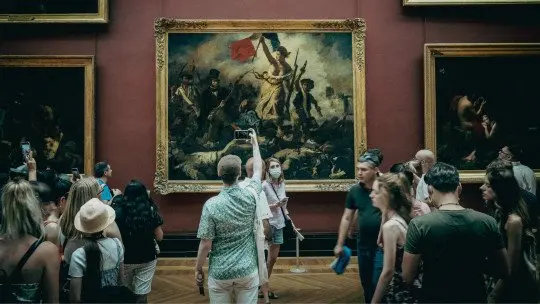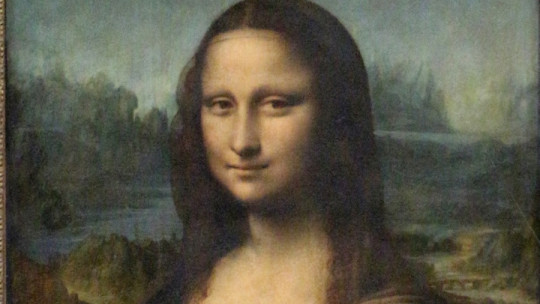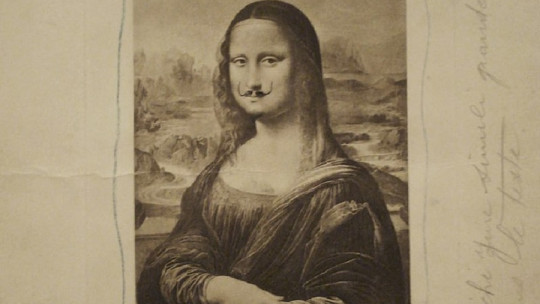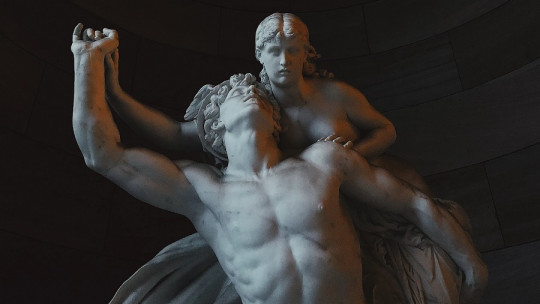About 20,000 visitors a day. Are we talking about the channel of a influencer? No, we refer to the Giocondato the famous Mona Lisa by Leonardo da Vinci. It is estimated that this is the number of people who, on average, parade in front of this small table in a single day, a record hardly surpassed by any other work of art in the world.
What is it about this painting that arouses so much interest? What makes the Mona Lisa trending topics for museum visitors? In this article we explain the reason the Mona Lisa is so famous
Why is the Mona Lisa so famous?
For most critics, it is by no means da Vinci’s masterpiece. And not because of its small dimensions (77 x 53 cm), but because the Florentine master has works of greater artistic caliber in his artistic corpus. For example, and without leaving the Louvre, we have the famous Virgin of the Rocksexecuted between 1483 and 1486. The one kept in the Louvre is considered the first of the copies (the second is in the National Gallery in London), made for a chapel in the church of San Francesco in Milan. The composition, the execution of the figures and the rocky landscape in the background, almost unreal, make this panel a masterpiece
The table is just as impressive. The Virgin, Saint Anne and the Childpainted by da Vinci in 1503. The triangle drawn by the three figures, subtly balanced by the movement of the mother (who tries to separate the son from the lamb, a symbol of sacrifice), together with the delicate representation of the landscape in the background, indicate that we are facing one of the great works of the Florentine painter.
But why, then, when we go to the Louvre, do we find the Monastery room crowded? Why is this small table the only work in the museum that has catenaries to manage the flow of visitors? What makes the Mona Lisa a “unique” work?
A very notorious robbery
To understand it, we have to go back in time and go back to the month of August 1911. If we had been able to visit that year the room where the Mona Lisa was exhibited, we would have been able to notice that the influx of visitors was not even close to what it is today. Yes, it is true that at the beginning of the 20th century globalization had just begun, and, of course, networks and the Internet did not exist. But this is not the cause of the absence of people before the Mona Lisa. Simply put, people did not consider the Mona Lisa a special painting.
But it happened that, on August 22, 1911, the Louvre workers realized that the Mona Lisa was not in its place. It had been stolen. An exhaustive investigation soon began, and the newspapers of the time attempted to reconstruct the events in an almost feverish manner. Much later it was learned that, the day before, the thief, disguised as a worker, had taken the painting down and calmly placed it under his arm. Then, without losing his cool, he hid it in her robe and left the museum with her.
The enormous media coverage that was given to the theft had a lot to do with the fame that the Mona Lisa was acquiring month after month She appeared in newspapers, on billboards, on the packaging of candies and chocolate bars. Da Vinci’s painting had gone from being an almost anonymous work among the thousands that the Louvre treasured to being a true celebrity. People, intoxicated by publicity and news on the subject, asked themselves, over and over again: And… Where is the Mona Lisa?
Two long years of advertising
Even Picasso himself and his colleague Guillaume Apollinaire were accused of being involved in the theft. Newspapers made up story after story, all false and baseless, just to keep readers’ attention One of the most popular was the hoax that Leonardo had fallen in love with the woman depicted and that the story of the Mona Lisa was a beautiful love story. Anyway; The truth had become a real novel and those who spoke about it sold more copies than serial book publishers. And meanwhile, the Mona Lisa still did not appear.
In this way two long years passed. In 1913, someone contacted an antiques dealer and the curator of the Uffizi in Florence. He wanted to sell them a work of art that he was sure would interest them. He meets her in a small hotel in Florence. The name of the seller, Vincenzo Peruggia, a humble character who had worked at the Louvre previously.
The two men mentioned soon realized that the work of art that Peruggia wanted to sell them was the authentic Mona Lisa. The discovery disconcerted them, since, In 1913, even the Louvre itself had lost hope of finding its lost maid Immediately, the men called the police; Peruggia was arrested, and the Mona Lisa, of course, returned to Paris.
Not content with the end of the bizarre event, the media continued to feed the story for a few more years. In 1915, a French newspaper published what they claimed was the thief’s confession.
The article claimed that Peruggia had stolen the work because he wanted to return it to Italy, the place where it “had come from” and where it “belonged.” Apparently, he was convinced that Napoleon had stolen the work while passing through the Italian peninsula. What the thief did not know was that da Vinci had taken the Mona Lisa with him when he moved to France, and that King Francis I had acquired it shortly after. No theft, no looting. Just a poor soul who had nurtured patriotic dreams.
The birth of a myth
While the Mona Lisa was missing, The flow of visitors who stopped in his room to contemplate the empty space he had left increased considerably Upon his return, hysteria broke out. Everyone wanted to see with their own eyes the little work that had caused so much controversy. Everyone went to the Louvre to see the Mona Lisa.
Since then, his fame has only grown. Perhaps to justify so much hustle and bustle, some have wanted to see it as da Vinci’s “masterpiece,” the zenith of his artistic creation. The fact that the painter took this version of the Mona Lisa with him to France seemed to corroborate the magnitude of the work; At least, it was plausible to think that the artist held the panel in high esteem. All of this, of course, continued to fuel legends about the identity of the woman portrayed, her relationship with Leonardo and the reason for her “strange smile.”
A smile that, on the other hand, is not at all enigmatic There is nothing in the Mona Lisa’s face that makes us think of an unusual creation; Neither the landscape in the background nor the rest of the composition shows any outstanding characteristic that makes it stand out from the rest of Leonardo’s works. We have, more than likely, a simple idealization motivated by sudden fame.
The other Gioconda
What perhaps many of the visitors who flock to photograph (not contemplate) the Louvre’s Mona Lisa do not know is that there is another Mona Lisa, a “twin” that most of gioconda-maniacs unknown. This other version is in the Prado Museum, in Madrid, and experts maintain that it also came from Leonardo’s workshop, possibly from the brush of someone very close to the painter.
The Mona Lisa del Prado is, according to specialists, the earliest copy of the work The composition is identical, as is the creative process (it contains the same corrections as its French namesake), which suggests that, indeed, they were painted at the same time and in parallel in the same workshop.
The truly curious thing is that, if you go to the Prado, you will be able to see that the Mona Lisa in Madrid does not have the avalanche of visitors that its “twin” in the Louvre has. We have already commented that, possibly, the vast majority of those who go to the Parisian museum are unaware of the existence of the “Spanish” Mona Lisa. Furthermore, the Prado version never suffered the theft or the tremendous media coverage that its companion did experience.

